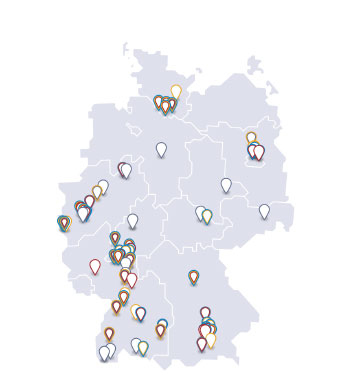EU harms research
On April 26th, 2023, the EU Commission released the Pharmaceutical Package (General Pharmaceutical Legislative Revision), a long-awaited regulatory project aimed at implementing the EU pharmaceutical strategy. The package includes two legislative proposals: a new directive and a new regulation. These proposals seek to establish a comprehensive legal framework for all medicinal products in the EU, simplifying and replacing the existing pharmaceutical legislation.

DOWNLOAD:
Download the vfa's position paper on the EU General Pharmaceutical Legislative Revision. The document is available in German language. An English version will follow.
Key demands:
- Enhancing the competitiveness of Europe's pharmaceutical industry by ensuring its readiness for the future: bolstering research, development, and production capacities for novel therapies and vaccines
- Preserving and expanding investment incentives and safeguarding intellectual property rights
- Addressing unmet medical needs with a patient-centered approach
- Enhancing market access and streamlining approval processes for faster and simpler evaluations
The vfa fully supports the EU Commission's objectives to intensify the development of new innovative drugs for children and individuals with rare diseases, enhance the global competitiveness of the research-based pharmaceutical industry in Europe, and improve access to medicines for all patients across the EU. Additionally, the vfa commends the positive approaches outlined in the Commission's draft, which aim to create a competitive regulatory environment and provide incentives for research and the development of new antibiotics. In this regard, the research-based pharmaceutical industry encourages a focused and ambitious approach from the EU.
The EU Pharmaceutical Package presents a unique opportunity to bring Europe back to the forefront of global innovation and investment competition of novel medicines. However, some of the proposed measures by the EU Commission not only introduce legal uncertainties for companies but also contradict the stated goals of improving patient access to medications, promoting innovation, and enhancing international competitiveness.
The research-based pharmaceutical industry identifies the following five critical problem areas:
- Reductions of Regulatory Data Protection (RDP) and market exclusivity for orphan drugs, which are linked to various conditions such as market access in all EU countries, the existence of a newly defined (high) unmet medical need, and the requirement for comparative clinical trials.
- The initiation of indication extensions in areas with (high) unmet therapeutic needs by non-commercial, academic research groups without the knowledge and consent of the marketing authorization holder.
- The use of incomplete or inadequate environmental risk assessments as reasons for the failure of marketing authorization applications.
- The untargeted and unfeasible measures to prevent supply shortages, including the obligation for pharmaceutical companies to provide six months' notice of drug shortages.
- The introduction of transferable exclusivity vouchers (TEVs) as incentives for the development of new antibiotics, which may fail to achieve their intended objective due to the proposed overly restrictive design.
Implementing the Commission's draft in its current form will not accomplish its actual goal of improving the availability of innovative medicines for patients throughout Europe. On the contrary, creating a complex system with lowered standards of intellectual property protection in Europe will hinder rather than enhance investment in research, development, and production of medicines. This holds especially true for member states, such as Germany that are facing pressures from inflation, cost-cutting policies under the Financial Stabilization Act, and subsidy policies implemented by other industrialized nations.
This trend becomes apparent when looking at the following figures: In 2002, pharmaceutical companies in the USA invested a mere two billion U.S. Dollars more in research and development compared to their European counterparts. However, today, this gap has significantly widened to 25 billion U.S. Dollars. If this trend persists and is further intensified by new regulations, it is estimated that by 2040, the difference will surpass 200 billion Euros (1)
.



